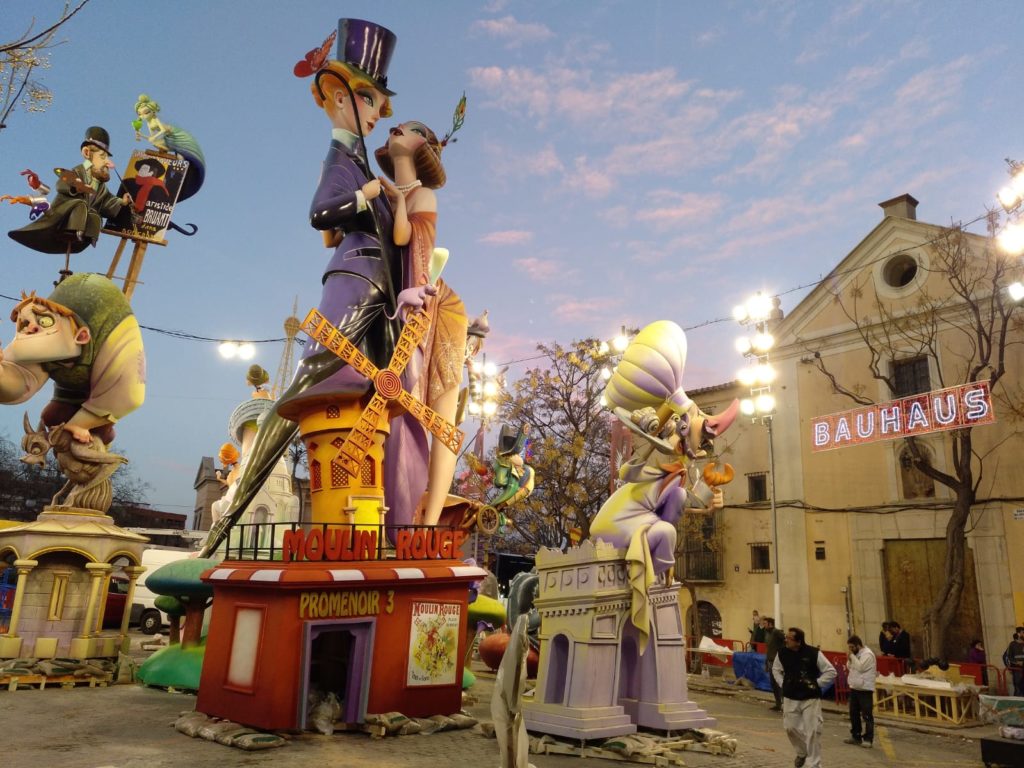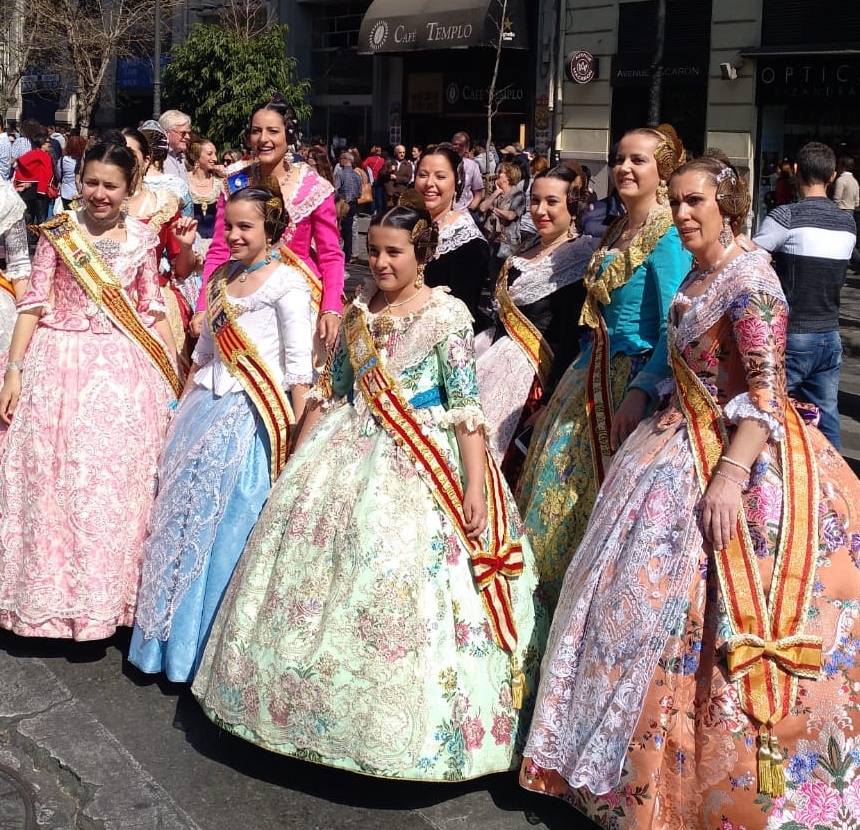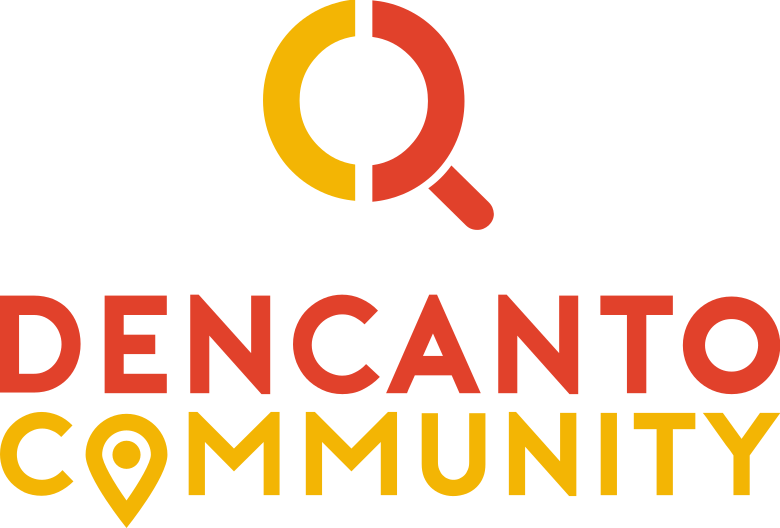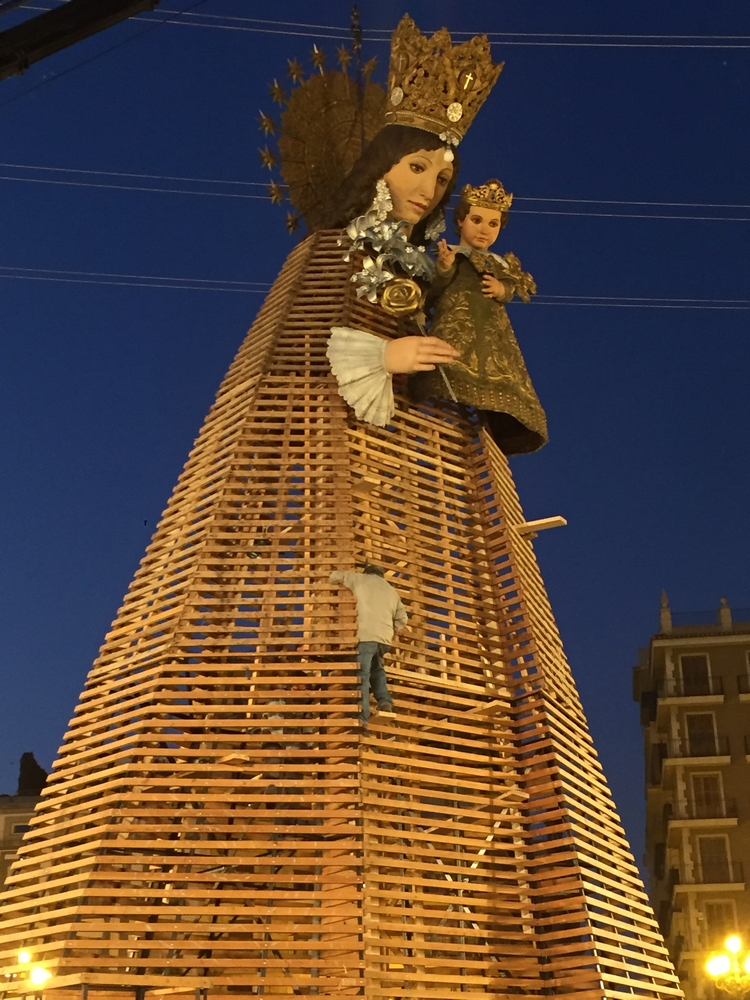Colours, firework, gunpowder and art… art everywhere! These are the principle elements of Las Fallas, one of the most creative Spanish festivals. Las Fallas is an annual tradition celebrated from March 15th to 19th in the region of Valencia. If you are studying Spanish and you are interested in learning more about Spanish habits and culture, this event is a must. Today we will tell you everything you need to know about Las Fallas and the reasons why you should experience this festival.
Las Fallas: The art
Fallas are giant monuments made of wood, cork or papier-mâché. The single figures that composed these monuments are called ‘ninots’. Usually, these figures represent satiric scenes in order to criticise popular aspects of the society such as politics, the current social situation or some odd customs. Moreover, there are many fallas representing fantastic characters from movies or fairy-tales.

Fallas are true masterpieces made by professional artists or by participants of the clubs exclusively dedicated to Las Fallas festival. You will find them on the streets and squares of Valencia.



The most important part is that at the end of the festival, every falla will be burned in the final event named ‘cremá’.. Just one ‘ninot’ chosen by the public will be saved and displayed at the Fallas Museum.
Las Fallas: The events
There are many other interesting traditions related to this festival apart from the fallas construction itself.
La fallera mayor. Each year, a regional jury choose one girl as the maximum representative of Las Fallas. The chosen girl will be an ambassador of the festivity during one year. Also, the jury chooses a child-girl – fallera infantil. The falleras wear a beautiful traditional costume.

La mascletá. It is a pyrotechnic show, full of noise and rhythm. This event is celebrated each day from March 1st to 19th at 14:00 in the City Council square. The explosions sounds increase per minute creating very emotive feelings.
The noise in general is one of the main elements of Las Fallas, since people buy firecrackers of all kinds and you can hear their explosions on the streets at all hours.
La ofrenda. Close to the Cathedral a giant wooden Virgin is put on display. During March 17th to 18th, the falleras go there to take carnations decorating the wooden figure.
The lighats of Ruzafa. During Las Fallas, the streets of Valencia are illuminated. Ruzafa is one of the most important neighborhoods of the city, where the lights of Las Fallas creates a very special joyful environment.
The fireworks. If the mascletá is celebrated by day and focus on sound, the most important show at night are the fireworks. It is a celebration of light and colour.
Valencian people take their traditions very seriously, that’s why they celebrated them in style. You will be surprised by the intensive feelings this celebration will get on you.
Las Fallas: The city and its atmosphere
Valencia is a city that worth a visit at any period of the year. It has a vary number of exciting monuments to visit, such as the old town and the fantastic City of Arts and Science. Moreover, in Valencia you can enjoy the beach and an active cultural life and it is well-known for the best paella in the world. That’s why we’ve included it into our list of the best summer destinations to learn Spanish in Spain.
Still, during the festivity of Las Fallas, Valencia is filled with lights and music, so it is a very special moment to enjoy the city. Next to each falla you will find the tents, the stalls with churros and fritters, at night they made palleas in the street and organize outdoor concerts. There is a really great atmosphere in the city!
Coming to Valencia during Las Fallas means seeing the city in its full glory. We recommend you doing a Spanish course in Valencia not just to improve your Spanish but also to make new friends and enjoy the party with them.
It is an unforgettable experience!
translated by Elena Domínguez




